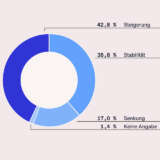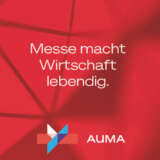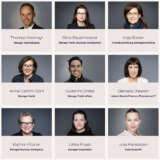AUMA Exhibitor Outlook: Trade fairs are essential
An article by Max Reichert, Manager Business Insights at AUMA
Max Reichert has been working in the Trade Fairs Germany team since January 2024.
The German trade fair industry is in a phase of recovery and reorientation. Following the trade fair bans during the pandemic, companies have come to appreciate all the more the value of face-to-face events once again. The AUMA Exhibitor Outlook 2024/2025 shows that the majority of companies continue to rely on trade fairs despite economic uncertainties. Following the long compulsory break due to the pandemic, a survey of 400 exhibiting companies was conducted in the autumn of 2023 to assess exhibitors' views on the challenges and opportunities presented by exhibiting at trade fairs.
Trade fairs continue to play an important role in the marketing mix, as evidenced by the 99.5% of respondents who indicated a desire to continue exhibiting at trade fairs as part of their corporate strategy. Two-thirds of companies anticipate that the significance of trade fairs will remain consistent or even grow in the coming years. This perspective is particularly prevalent among smaller companies specialising in consumer goods fairs. It underlines the role of trade fairs as an indispensable platform for business development and face-to-face customer contact.
Changes
The exhibition industry has undergone significant changes in recent years, necessitating strategic adjustments. A significant number of companies have recognised that there is no suitable substitute for the benefits of live exhibitions in the challenging times of the pandemic. This was particularly evident in the retail sector and in companies with a turnover of more than 125 million euro. There seems to be no substitute for the direct interaction and networking that takes place at trade fairs. Simultaneously, a similar proportion (34.8%) used the opportunity to diversify their marketing strategies and integrate a wider range of tools.
The need for digital transformation was also evident, with a quarter of respondents developing new digital formats as reaction to the constraints caused by the global crises. In response to the current economic climate, over eight per cent of companies have shifted their focus to leading international trade fairs in Germany in order to ensure maximum reach. In contrast, almost 13% of exhibitors have identified regional trade fairs as valuable platforms for reaching specific target groups more effectively. These developments demonstrate not only the ability of exhibiting companies to adapt to new realities, but also their ability to innovate.
AUMA Exhibitor Outlook 2024/2025
Changes in trade fair attendance due to the pandemic
Source: Messe-Insights | AUMA-Exhibitor Outlook 2024/2025
Survey in october/november 2023, n=400 companies
Following the end of the pandemic, the economy now faces a number of new challenges: Nearly 70% of respondents cited managing rising costs as the biggest obstacle. Furthermore, the current geopolitical climate is a significant challenge for more than half of the respondents. The need to implement both internal and external sustainability requirements also brings additional complexity. Attracting new trade fair visitors is another key issue for around 44% of companies. As a result, they are seeking to intensify their visitor acquisition strategies.
Stability
For businesses looking to reinforce their brand and expand their reach, exhibiting at trade fairs in Germany remains a crucial strategy. The majority of companies surveyed (70%) intend to continue exhibiting at trade fairs in Germany at the current level. Among larger companies with more than 200 employees, there is an increased willingness to exhibit more frequently. Over 15% of the larger businesses are already planning to do so.
This trend notably pertains to the retail sector, with over 24% of companies anticipating a substantial increase in their trade fair activities. This is also evident at European level, with nearly 85% of surveyed companies planning to continue exhibiting at trade fairs at their current level.
Overall, the first AUMA study of this kind following the end of all pandemic restrictions has revealed a remarkable stability in companies exhibiting at trade fairs. While companies with a higher turnover and a focus on trade fairs for capital goods are exhibiting more frequently, companies that exhibit at a large number of trade fairs are more likely to focus on a more targeted selection in the future.
Some 43% of exhibiting companies plan to increase their trade fair budgets. Companies with a turnover of more than 50 million and a large number of employees are particularly likely to increase their budgets. This trend is also reflected in sectoral differences, particularly in the retail and services sectors, where there is an increased willingness to invest.
The development of the trade fair budget in marketing shows that stability prevails: 70% of companies plan to keep their budget share constant in 2024/2025 compared to previous years. 14% of companies plan to increase their budget, with six per cent even aiming for an increase of more than five per cent.
AUMA Exhibitor Outlook 2024/2025
Developments of the trade fair budget for companies in Germany 2022/2023 to 2024/2025
Source: Messe-Insights | AUMA Exhibitor Outlook 2024/2025
Survey in october/november 2023, n=400 companies
Larger companies with more than 200 employees are the most stable in their trade fair budget planning. In the retail sector, 17% of companies expect to increase their budget.
Conclusion
The results of the first AUMA Exhibitor Outlook following the pandemic demonstrate that companies view trade fairs as an essential component of their marketing strategy. The adaptability and strategic importance of trade fairs remain crucial for achieving business objectives and maintaining direct customer relationships.
Download the AUMA Exhibitor Outlook in German here.








